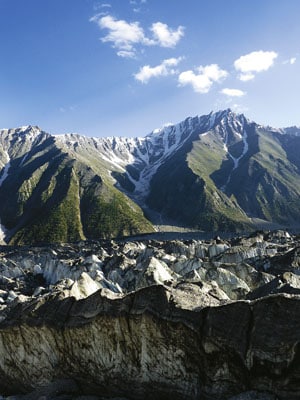
A Short Drive Through the Karakoram
In an ancient theatre of conflict, a traveller finds peace and good neighbourliness
You’re from Bombay? So what? You are like my brother!” Our guide’s voice rasps out through the lobby of the Eagles Nest Hotel in Pakistan’s Hunza valley. We had got through another Pakistani military checkpoint on our 1,250 km drive on the Karakoram Highway, from Islamabad to the Chinese border at Khunjerab, and I had just told him to keep my origins to himself.
The noise drops as the information travels. The attendants turn to look at us: “You’re from Bombay?”
We encounter this question often. But my concern over being identified as Indian in what I know as Pakistan-Occupied Kashmir was slowly replaced with the comforting knowledge that my inquisitors were just like gossiping neighbours back home.
The Karakoram is a formidable natural frontier. The range hosts seven of the 20 highest mountains on earth, including K2, at 8,611 metres, the second highest. It is the most heavily glaciated part of the earth outside the poles, and includes the 122-km-long Biafo-Hispar, the world’s longest glacial system.
Ringed by the Hindukush, Himalaya, Kunlun and Pamir ranges, the Karakoram is a gnarly, impenetrable knot. Some local kingdoms are still not fully assimilated into the country.
Politics hasn’t helped. In the 19th Century, Britain and Russia jockeyed here for influence in Central Asia, immortalised as ‘The Great Game’ in Kipling’s Kim. With ongoing conflict between India and Pakistan, and keen interest from China, Afghanistan, and Russia, the Karakoram continues to be the pivot of Asia.
 On our journey to Gilgit, the last airstrip in the mountains, alpine forests and hilltops pass below our 15-seater airplane. We bank to dodge what looks like a whole mountain range. It turns out to be just one peak: Nanga Parbat, 8,126 metres, the world’s ninth highest mountain, so steep it suffers little snow. From the haze of the foothills, just south of the Indus, this massive rock forms a 30 km wall. It fills our window, and our minds.
On our journey to Gilgit, the last airstrip in the mountains, alpine forests and hilltops pass below our 15-seater airplane. We bank to dodge what looks like a whole mountain range. It turns out to be just one peak: Nanga Parbat, 8,126 metres, the world’s ninth highest mountain, so steep it suffers little snow. From the haze of the foothills, just south of the Indus, this massive rock forms a 30 km wall. It fills our window, and our minds.
Two days later, we climb our way through 40°C heat in the moraines of Raikot Gah, one of Nanga Parbat’s many glacial valleys. I turn a corner and confront the mountain again.









